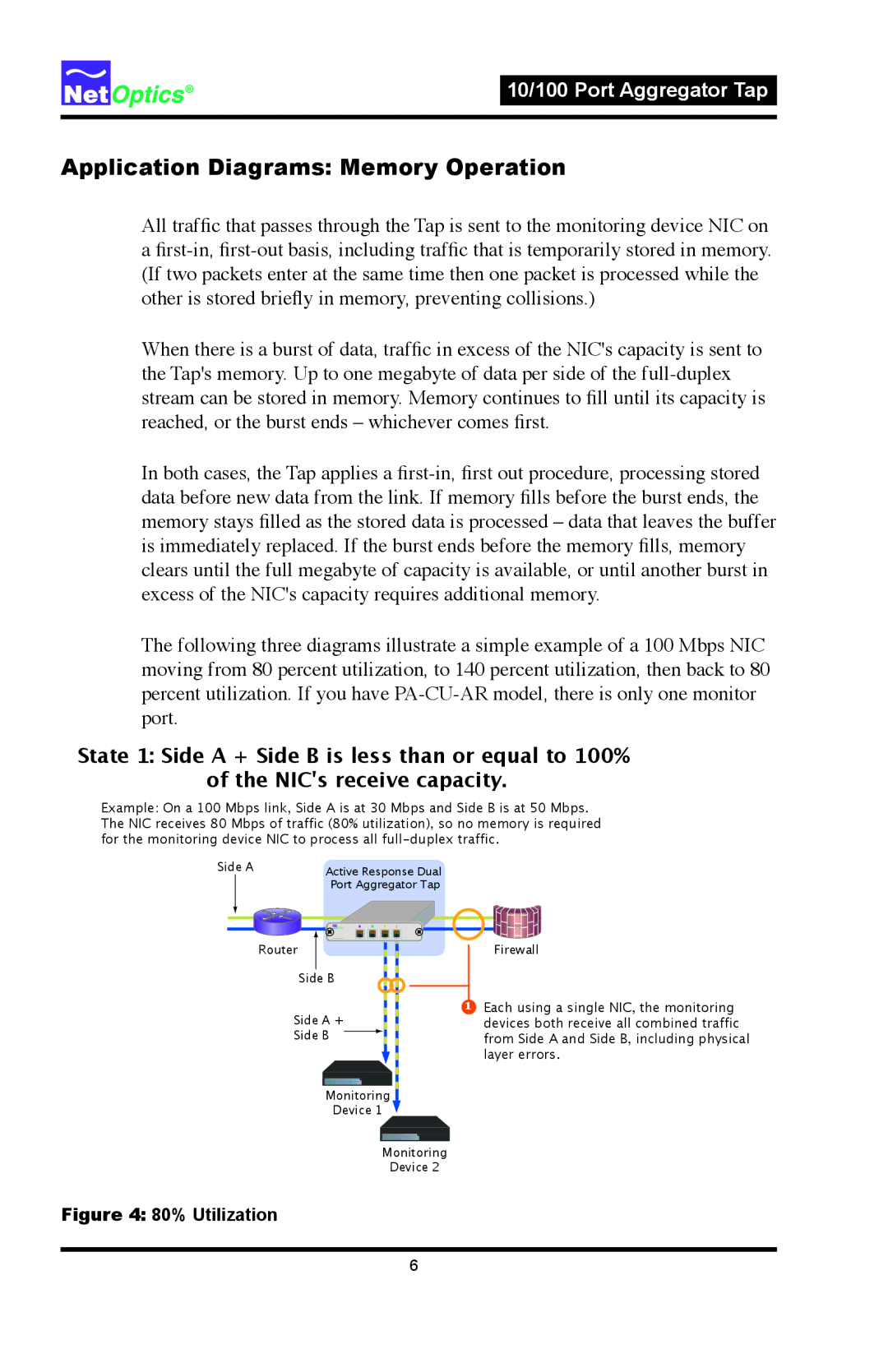
10/100 Port Aggregator Tap
Application Diagrams: Memory Operation
All traffic that passes through the Tap is sent to the monitoring device NIC on a
When there is a burst of data, traffic in excess of the NIC's capacity is sent to the Tap's memory. .Up to one megabyte of data per side of the
In both cases, the Tap applies a
The following three diagrams illustrate a simple example of a 100 Mbps NIC moving from 80 percent utilization, to 140 percent utilization, then back to 80 percent utilization. .If you have
State 1: Side A + Side B is less than or equal to 100% of the NIC's receive capacity.
Example: On a 100 Mbps link, Side A is at 30 Mbps and Side B is at 50 Mbps. The NIC receives 80 Mbps of traffic (80% utilization), so no memory is required for the monitoring device NIC to process all
Side A | Active Response Dual |
|
| Port Aggregator Tap |
|
| A B 1 2 |
|
| Router | Firewall |
| Side B |
|
| 1 | Each using a single NIC, the monitoring |
| Side A + | devices both receive all combined traffic |
| Side B | from Side A and Side B, including physical |
|
| layer errors. |
| Monitoring |
|
| Device 1 |
|
| Monitoring |
|
| Device 2 |
|
